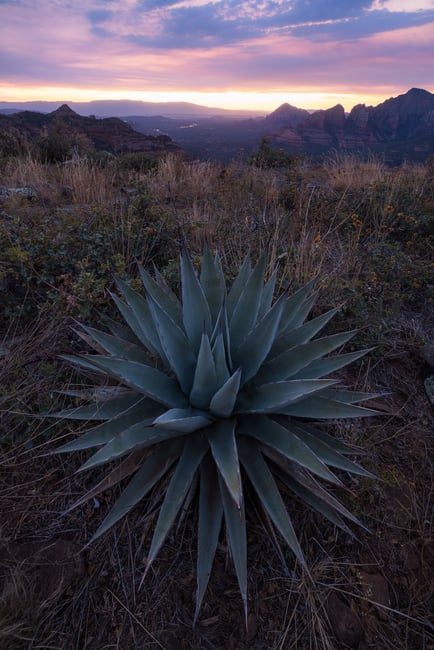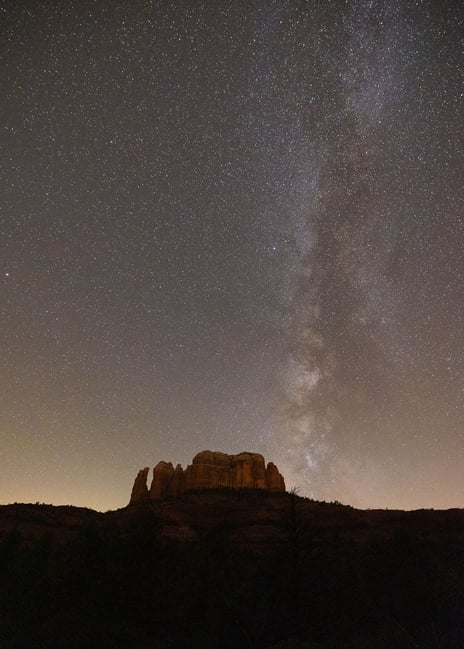Focus Speed and Performance
The Canon RF 15-35mm f/2.8 L autofocuses quickly and almost silently. It is also impressively accurate when focusing at f/2.8, and the bright maximum aperture allows quick focusing even in very low light conditions.
That said, Canon’s current mirrorless cameras always autofocus at maximum aperture regardless of which aperture value you have selected. This can be a problem with lenses that have significant focus shift (where the focus distance changes slightly at different aperture values). Unfortunately, the Canon RF 15-35mm f/2.8 L has a bit of focus shift at every focal length, meaning that critical autofocus accuracy in the range from about f/3.2 to f/5.6 is hit or miss.
I’d also like to note that the RF 15-35mm f/2.8 L is far from being parfocal. In other words, the focus distance changes significantly as you zoom in or out. This can be more of a concern for videography than for photography. Even so, photographers must remember to re-focus the lens each time the focal length is changed.
Lastly, the close-focusing capabilities of the Canon RF 15-35mm f/2.8 L are pretty solid, with a maximum magnification of 0.21x (about 1:5 magnification). This doesn’t qualify as macro photography, but it’s enough for some good photos if you’re interested in the wide-angle, close-up look.

Distortion
The Canon RF 15-35mm f/2.8 L has remarkably low levels of distortion for an ultra-wide zoom. Here’s a chart showing the distortion from 15mm to 35mm:

The lens maxes out at just -1.03% barrel distortion at 15mm and 1.83% pincushion distortion at 28mm. This is much lower than typical ultra-wide zooms, which are some of the most distortion-prone lenses on the market. For example, the Nikon Z 14-24mm f/2.8 S reaches -3.52% barrel distortion at 14mm, and the Sony 16-35mm f/2.8 GM reaches -1.96% barrel distortion at 16mm.
Here’s a simulation of the Canon RF 15-35mm f/2.8 L’s distortion at 15mm, where barrel distortion is highest:

And at 28mm, where pincushion distortion is highest:

Lateral Chromatic Aberration
The Canon RF 15-35mm f/2.8 L puts in a very good performance in terms of chromatic aberration. Here’s a complete chart:

Anything under about one pixel is almost impossible to notice in real-world images, even with chromatic aberration corrections turned off. The Canon RF 15-35mm f/2.8 L stays under this threshold everywhere except 15mm at f/11 and f/16 – and even then, it’s in the ballpark.
By comparison, the Nikon Z 14-24mm f/2.8 maxes out at 0.92 pixels of chromatic aberration, and the Sony 16-35mm f/2.8 GM reaches 1.78 pixels at the most.
Vignetting
Unfortunately, this is where things start to look really bad for the Canon RF 15-35mm f/2.8 L. Here are full charts of the lens’s vignetting levels at close focus and infinity focus:


The maximum of 3.17 stops is practically unheard of. Vignetting improves to manageable – though still disappointing – levels as you stop down to f/4 and especially f/5.6. There isn’t much difference between close focus and infinity performance, with both being terrible. Zooming in helps quite a bit, at least.
While most post-processing software will correct for vignetting automatically, I believe that’s beside the point. Correcting over three stops of vignetting is impossible to do without introducing some artifacts to the image, especially noise, discoloration, and sharpness loss in the corners.
This extreme vignetting is an albatross around the neck of an otherwise excellent lens. It makes it clear why so many other ultra-wide f/2.8 zooms have such bulbous front elements, or why they stop at 16mm rather than going to 15mm. (By comparison, I called the Nikon Z 14-24mm f/2.8’s vignetting “pretty high” back when I reviewed it, and that lens maxes out at just 2.05 stops of vignetting.)
Here’s an unmodified image against a gray field to show the worst-case scenario, where the corners are almost black.

If there’s any consolation, the falloff is sharp enough that cropping can help somewhat. And, again, post-processing software will tend to remove this vignetting by default – so you won’t necessarily see the vignetting directly, even though some noise-related artifacts will remain. But overall, Canon really needed to do better in this department.
Sharpness
The Canon RF 15-35mm f/2.8 L is a sharp lens from corner to corner throughout the zoom and aperture range. Here’s how it measures in our lab:





There are no major weak points to be found here, and the strongest focal length is 15mm. Lots of ultra-wide lenses are weaker at their widest focal lengths, so this is a refreshing sight.
You’ll get a better sense of how this compares to the competition on the following page of this review, but overall, it’s a very strong performance. The Canon RF 15-35mm f/2.8 is a seriously sharp lens, especially for an ultra-wide zoom. (Note that it does have some focus shift and field curvature that can impact critical sharpness to a small degree, depending on the scene and your choice of aperture.)
Coma
Related to sharpness is coma, a lens aberration that can make dots of light in the corner of a photo look like smears. Coma isn’t usually visible in everyday photography, but for something like Milky Way photography, it can be a factor.
Even though the lens has a lot of vignetting, the wide focal length and bright maximum aperture are ideal for capturing the night sky. So, I wanted to put its coma performance to the test.

The images shown below are extreme crops from the top-right corner of the Canon EOS R5 with the RF 15-35mm f/2.8 L. The following 960×640 pixel crops are direct excerpts from the image with Lightroom’s default sharpening and noise reduction applied:





The coma performance at 15mm is extremely impressive, and while the lens does have more coma as you zoom in, it remains solid throughout the zoom range. If not for the vignetting performance, the Canon RF 15-35mm f/2.8 L would makes a good Milky Way photography lens at any focal length.
Flare and Sunstars
Ultra-wide lenses, especially complex zooms like the Canon RF 15-35mm f/2.8 L, often have high levels of flare that harm any photos with the sun in the frame. Luckily, the Canon RF 15-35mm f/2.8’s extensive high-quality coatings do a good job reducing flare to very manageable levels. Even with the sun in the frame, you’ll continue to get high contrast and good colors in your photos.

I found that every once in a while, when the sun was slightly out of the frame, there was a bit of veiling flare that could be a problem. Small tweaks to the composition were enough to eliminate it every time, and it seems like a very direction-sensitive issue. It doesn’t concern me, but it looks like this in the rare cases where it appears:

As for sunstars, I was pleasantly surprised to see strong 18-point sunbeams with the Canon RF 15-35mm f/2.8 L when using narrow apertures. Bright points of light are rarely rendered so nicely on wide-angle zoom lenses.

Overall, the flare performance of the Canon RF 15-35mm f/2.8 L continues the trend: Apart from the high vignetting, this lens is very strong all-around, making it one of the best wide-angle lenses on the market today.
The next page of this review dives into the sharpness numbers a bit more, with some comparisons against other lenses that Canon users may be considering. So, click the menu below to go to “Sharpness Comparisons”:
Table of Contents